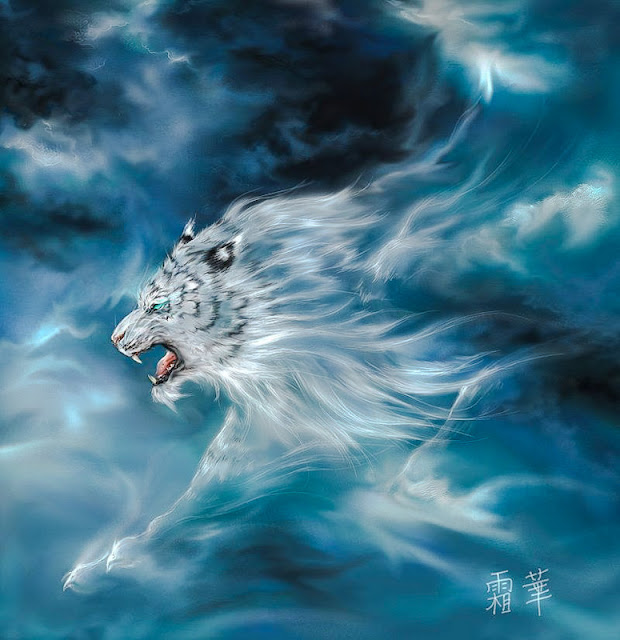Counting Tigers
Counting tigers is notoriously difficult, in part because they are very secretive. They need to be to survive the activities of people.
"Subjective judgments" have to be made. When you do that self serving interests can get in the way of making good judgments! The tiger count in India was overestimated at one time and it came as a shock when the figure was revised downward. It is almost possible to image the scenario whereby the tiger becomes extinct in the wild without people knowing about it.
In the old days counting tigers was carried out by pug marks and scats. "Pug marks" are the footprint of an animal. The word "pug" means "foot" in Hindi. "Scats" are fecal droppings.
Camera traps are also used. These are cameras mounted on trees, rocks and such objects which fire off when a tiger passes in front of it. The positioning of the camera has to be assessed accurately and with wisdom. Both camera traps and radio collars are reliable, apparently, but they are described as "difficult techniques". Individual tigers can be identified from their tracks but this technique seems to be unreliable and it led to overestimated numbers.
The more modern system for counting tigers is to assess tiger population density. Tiger population density can be assessed by assessing the number and species of tiger prey that the land can sustain. The capacity of the land to provide a home for prey is dependent on the climate, the topography and the soil quality amongst other variables. These variables dictate the quality of plant material upon which the prey grazes
Tigers need large prey to survive. Small prey cannot sustain a tiger. Their prey ranges in size from 30 kgs (66 pounds - for example a pig) to a gaur at up to 1,000 kgs (2,200 pounds).
Where prey is abundant tigers have smaller home ranges because they don't have to travel so far to find it. Therefore tiger density corresponds to prey abundance.
In Siberia a female Amur tiger might have a home range of up to 155 square miles (400 square kms) whereas in southern Asia it may be much reduced to 8 square miles.
In prime Indian tiger habitat presumably found on the majority of the Bengal tiger reserves, tiger density might be in the order of 3-4 tigers per 100 square kms (7.8-10.4 per 100 square miles). In Siberia by comparison, the density will be much lower at 0.2-1 tiger per 100 square kms or 0.5-2.6 tigers per 100 square miles.
Another factor that dictates tiger density is the social behavior of tigers that demands "spacing mechanisms" and a certain size of home range and that overlaps with several female ranges.
We should always be cautious when we read about tiger population numbers. The figures are not hard data. Are the small island tiger populations of the reserves adequate to sustain the tiger?
A recent modern way of assessing tiger numbers is through DNA analysis of scats.
"Subjective judgments" have to be made. When you do that self serving interests can get in the way of making good judgments! The tiger count in India was overestimated at one time and it came as a shock when the figure was revised downward. It is almost possible to image the scenario whereby the tiger becomes extinct in the wild without people knowing about it.
In the old days counting tigers was carried out by pug marks and scats. "Pug marks" are the footprint of an animal. The word "pug" means "foot" in Hindi. "Scats" are fecal droppings.
Camera traps are also used. These are cameras mounted on trees, rocks and such objects which fire off when a tiger passes in front of it. The positioning of the camera has to be assessed accurately and with wisdom. Both camera traps and radio collars are reliable, apparently, but they are described as "difficult techniques". Individual tigers can be identified from their tracks but this technique seems to be unreliable and it led to overestimated numbers.
The more modern system for counting tigers is to assess tiger population density. Tiger population density can be assessed by assessing the number and species of tiger prey that the land can sustain. The capacity of the land to provide a home for prey is dependent on the climate, the topography and the soil quality amongst other variables. These variables dictate the quality of plant material upon which the prey grazes
Tigers need large prey to survive. Small prey cannot sustain a tiger. Their prey ranges in size from 30 kgs (66 pounds - for example a pig) to a gaur at up to 1,000 kgs (2,200 pounds).
Where prey is abundant tigers have smaller home ranges because they don't have to travel so far to find it. Therefore tiger density corresponds to prey abundance.
In Siberia a female Amur tiger might have a home range of up to 155 square miles (400 square kms) whereas in southern Asia it may be much reduced to 8 square miles.
In prime Indian tiger habitat presumably found on the majority of the Bengal tiger reserves, tiger density might be in the order of 3-4 tigers per 100 square kms (7.8-10.4 per 100 square miles). In Siberia by comparison, the density will be much lower at 0.2-1 tiger per 100 square kms or 0.5-2.6 tigers per 100 square miles.
Another factor that dictates tiger density is the social behavior of tigers that demands "spacing mechanisms" and a certain size of home range and that overlaps with several female ranges.
We should always be cautious when we read about tiger population numbers. The figures are not hard data. Are the small island tiger populations of the reserves adequate to sustain the tiger?
A recent modern way of assessing tiger numbers is through DNA analysis of scats.




Comments
Post a Comment
Please comment.